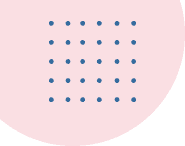The most common barrier to drug and substance abuse treatment is the fear of not knowing what life will be like during and after rehabilitation. If you've never been there before, you probably think of a rehab centre as a hospital, or a top-security facility where drug addicts get locked up and are miserable. But this couldn't be further from the truth.
Rehab is a home for people going through similar problems as each other. Oftentimes substance abuse is difficult to admit and out of control. You'll get to work with addiction experts and therapists whose major responsibility is to stabilize and keep you comfortable as you transition to sober living.
Entering rehab is often difficult for most people. And life during and after rehabilitation will be uncomfortable at first- there's no way around it. But knowing what to expect might help you overcome the fear of the unknown - it will diminish the barrier preventing you from getting and staying sober.
Is Rehab Free in Canada?
Though sometimes free, drug and alcohol treatment in Canada can cost tens of thousands of dollars.
When it comes to addiction treatment programs in Canada and probably around the world, you have choices: free, private, and public programs.
Free rehabilitation programs in Canada are run mainly by non-profit agencies and religious organizations. While they are free, these programs have strict rules and long waiting lists, especially for residential treatment. That said, they are often a match for people who have no other treatment options. You must be willing to wait until the facility can accommodate you, and you should be ready to abide by their strict rules.
Public addiction treatment facilities are funded by the government. These programs- whether outpatient or inpatient- cost nothing or are fairly inexpensive. They are available practically everywhere and staffed with a licensed, qualified team. The cons of public rehab programs include limited therapy sessions, long waiting lists, and a lack of immediate after-rehab support. All of these factors lead to lower success rates. Private drug and alcohol addiction treatment centres are owned by individuals, groups, or corporations. These centres are great, because the waiting times are lower, and quality care is provided. While the services do cost a premium, most will accept private health insurance.
Private Healthcare Plans Have Better Access to Mental Health Services Than Provincial Plans
Get quotes in minutes and save on the best insurance policies.
Get QuotesWhat Happens in Rehab?
While no two rehab facilities are alike, the process of drug and alcohol addiction treatment follows a similar structure. Rehab programs, in general, consist of four phases: intake, detox, treatment, and aftercare recovery.
Phase 1: Intake (Customizing a Treatment Plan)
After arriving at the facility, you'll be introduced to a team of doctors, nurses, and other staff who will support you throughout the process.
You'll also talk to your counselor, who will ask questions about your substance abuse, family history, and mental health. The individual will also examine the existence of typical co-occurring disorders like anxiety, psychotic, mood, eating, personality, and behavioral disorders. The results are used to curate a personalized therapy that will help guide you to sobriety. This is also the stage where a healthy meal plan will be put in place for you to aid the process of detoxification, and generally assist your overall well being.
Phase 2: Detoxification (Clearing the System of Addictive Substances)
Detoxification is the second stage of the rehabilitation process. This is where the specialists help you to clear the substances in your system. Detoxification is a dangerous phase with withdrawal symptoms like depression, aggression, muscle aches, seizures, hallucinations, and suicidal thoughts. That's why medically assisted detoxification is crucial to ease withdrawal symptoms and achieve mental and physical stability.
Phase 3: Treatment (Behavioural Therapy and Counselling)
When the addictive substances no longer impact the body, you're ready for the next rehabilitation stage. This phase is mostly residential, meaning that you reside inside the facility where you're treated and monitored in a protective environment for 24 hours a day.
Treatment in this phase mainly consists of behavioural therapy and counselling. You'll also be attending substance addiction classes where you understand everything about addiction, including how it affects you and your family.
This phase also involves getting you out of addiction denial. This may be done through individual counselling sessions, group therapies, or mutual support groups. The focus at this stage is to help you understand that you can move on and are not alone.
Phase 4: Partial Hospitalization (Continuing Care)
This is when you get a little more freedom. Depending on your situation and the type of facility, you may be spending around 6 hours a day, 5 days a week, in a protected environment and the remaining time at home.
Drug and alcohol rehabilitation is a life-long process. Thus, the essence of this phase is to let you understand the challenges that will come your way once you get a little bit more freedom in your journey to recovery.
During this stage, you'll still meet with your counselors to discuss your challenges and the necessary safeguards to avoid relapse. Your doctor will also constantly check for any mental health disorders that might negatively impact your efforts to stay sober.
How long each of these phases takes will vary between individuals. The difference is based on the severity of the addiction, the type of addictive substances taken, the patient's age, and the available resources in the addiction treatment facility. In general, the length of a rehab program may range from a few weeks to a year or even longer.
Life After Rehab
Completing a drug or alcohol addiction treatment program is an incredible milestone when trying to get your life back on track. But that doesn't mean that you're out of the woods just yet. The risk of relapse is exceptionally high, particularly during the first year after completing rehab.
Relapsing after drug or alcoholism addiction does not necessarily mean you're a failure. Just like it takes time to pick up an addiction, it takes time and willpower to get out of it completely.
Of course, while relapse is not a point of no return, there are lots of things you can do to avoid slipping and getting back to substance abuse:
- Consider cutting ties with old friends who are still doing drugs and strike friendships with drug-free individuals who want to see you succeed.
- Understand the risks. Understanding what may fuel a relapse helps you avoid and overcome the worst outcomes.
- Don't be overconfident. Relapse is always possible regardless of how long you've stayed "clean," and it does not just happen overnight. Relapse is gradual and begins when you justify your actions and engage in behaviours that threaten your recovery journey.
- Continue seeking help from experts.
- Join social groups that encourage and celebrate sobriety and hold members accountable.
Related Article
Read more on the rising causes of mental health issues in Canada’s youth.
View ArticleIn Conclusion
At Insurdinary, we look out for your well-being. Whether it's your finances, your future, or your health, we have you covered. We offer a wide range of affordable health insurance policies which include robust access to mental health services to help you ensure you stay on track on your rehabilitation journey, since you’ve come so far already. Relapse rates are high, and even expected. Quality continued support provided to you by a mental health professional that works with you every step of the way to ensure your continued success and growth and steadfastness is something that we can provide. Your future is now. Reach out to us. We look forward to being able to assist you.





